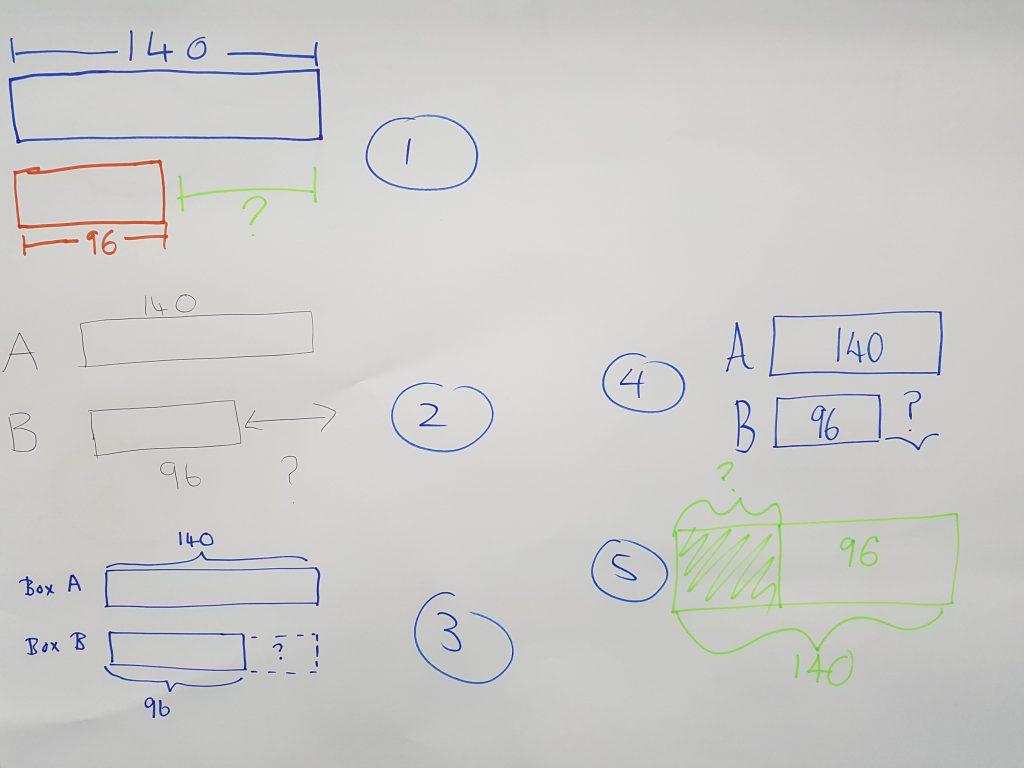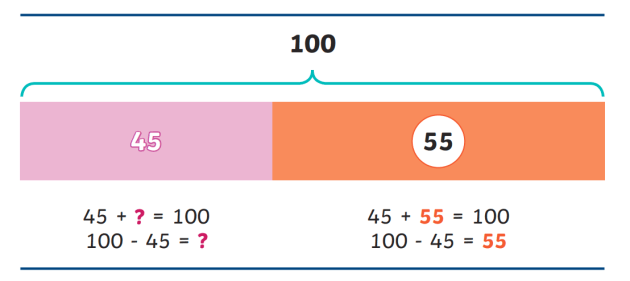Exploring Bar Design Drawing Techniques: A Comprehensive Guide to Imagining Math Concepts
Bar model drawing strategies function as a valuable source for both educators and trainees in visualizing mathematical concepts. These versions streamline complex mathematical partnerships, helping in the understanding of enhancement, multiplication, reduction, and division. This overview outlines reliable approaches for implementing bar models, fostering active engagement and real-world connections. As viewers explore the sensible applications and training tips, they will uncover just how these methods can transform their strategy to maths.
Understanding the Basics of Bar Version Illustration
Bar design attracting works as a powerful visual device in maths, assisting in the understanding of numerical partnerships and problem-solving methods. This technique involves representing numbers and their partnerships with rectangular bars, making it simpler to envision operations such as enhancement, reduction, division, and multiplication. Each bar's length represents a specific value, enabling students to compare quantities and understand percentages clearly.
To produce a bar version, one begins by determining the issue's crucial elements, typically breaking it down right into components that can be aesthetically stood for. In a simple enhancement issue, 2 bars can be drawn, with their sizes standing for the addends. The mixed size illustrates the amount. Additionally, bar versions can be adapted for a lot more complicated issues, including proportions and portions, by changing the bars appropriately. Mastering these fundamentals lays a strong structure for efficient problem-solving and deeper mathematical understanding.
Advantages of Utilizing Bar Models in Mathematics
Using bar versions in maths provides many advantages that boost learning and comprehension. These graphes help students in grasping complicated ideas by breaking them down right into convenient parts. Bar models offer a clear framework for illustrating partnerships between numbers, making abstract concepts much more concrete. They promote a much deeper understanding of mathematical operations and help with problem-solving by permitting students to envision the data they are collaborating with.
Bar models sustain the growth of crucial assuming abilities, as students need to assess and translate the aesthetic info to draw verdicts. This technique urges energetic interaction with the product, enhancing retention and proficiency of mathematical principles. By fostering a solid foundation in aesthetic proficiency, bar versions empower learners to approach different mathematical challenges with confidence. On the whole, the assimilation of bar designs right into mathematics education proves advantageous in growing both comprehension and logical capabilities amongst trainees.
Applying Bar Models to Enhancement and Reduction
Bar versions act as a reliable tool for visually standing for enhancement and subtraction troubles. By showing the relationship between numbers, they improve understanding and help with analytic. Furthermore, real-life applications of these designs can help students comprehend mathematical principles in functional contexts.
Standing For Enhancement Aesthetically
Aesthetic aids can considerably improve their understanding of these operations when pupils experience addition and subtraction troubles. Bar designs work as efficient devices for standing for enhancement. By splitting a rectangular shape into segments that correspond to the numbers included, students can envision the connection in between the amounts. As an example, if a trainee requires to include 3 and 5, they can develop a bar split right into two sections: one section representing 3 and the other standing for 5. This clear depiction not just simplifies the addition procedure yet also strengthens the idea of integrating amounts. As trainees control these visual help, they establish a deeper understanding of addition, resulting in enhanced analytical abilities and better confidence in their mathematical abilities.
Subtraction With Bar Models
Reduction is typically perceived as an extra intricate procedure than addition, bar models can properly clarify this process for students. By visually representing the amounts included, trainees can much better comprehend exactly how numbers associate with each other. In a bar version for subtraction, one bar stands for the total amount, while an additional shows the amount being subtracted. This visual difference assists students grasp the principle of "removing." If a bar shows 10 systems, and an additional bar standing for 4 systems is eliminated, trainees can easily see that 6 devices remain. This strategy not only fosters understanding of subtraction however also help in developing analytic skills, enabling pupils to picture their mathematical thinking and boost their overall understanding of mathematical concepts.
Real-Life Application Examples
Comprehending subtraction with bar versions lays a structure for applying these techniques in real-life circumstances. In various contexts, such as budgeting or purchasing, people can envision how much cash continues to be after expenses. For instance, if a person has $50 and spends $20, a bar version can stand for the complete amount and the invested portion, showing that $30 is left. In addition, parents can make use of bar versions to assist youngsters comprehend the amount of more things need to be contributed to complete a set, such as having 3 apples and requiring 5. This visual representation streamlines intricate issues, assisting in comprehension and retention. Inevitably, bar versions work as reliable tools in everyday decision-making, improving mathematical understanding in practical situations.
Imagining Multiplication and Department With Bar Versions
In checking out the application of bar versions for reproduction and department, it is important to comprehend their foundational concepts. Constructing reproduction designs allows students to imagine partnerships between numbers, while effective division methods can be highlighted with these aesthetic help. This approach enhances comprehension and analytic abilities in mathematics.
Recognizing Bar Versions
Bar models act as a powerful visual device for highlighting the ideas of multiplication and department. They allow learners to stand for mathematical relationships in an organized layout, helping with a deeper understanding of these procedures. In multiplication, bar models present groups of equal dimension, enabling individuals to imagine the total quantity when integrating these groups. On the other hand, in division, bar versions assist illustrate how an overall is separated into smaller sized, equivalent components, making clear the principle of dividing. By using these visual aids, students can realize the underlying principles of multiplication and division much more efficiently. This technique not just boosts comprehension yet also sustains problem-solving abilities, making bar versions a very useful possession in mathematical education and learning.
Constructing Reproduction Designs
Constructing multiplication designs utilizing bar layouts offers a clear technique for visualizing the procedure of multiplication. These models enable students to stand for reproduction as groups of equivalent components, making abstract principles much more concrete. To show (3 times 4), a student can draw one bar separated right into three equivalent sectors, each standing for 4 units. In addition, developing a 2nd bar with the same size enhances the understanding of duplicated enhancement, as each section corresponds to one team. This graph not just help in comprehending multiplication however also boosts problem-solving skills. By utilizing bar versions, students can better understand connections between numbers and develop a durable foundation for much more intricate mathematical concepts, leading to enhanced self-confidence in their capacities.
Envisioning Department Approaches

Resolving Word Issues Utilizing Bar Design Techniques

In a problem entailing addition and subtraction, trainees can attract different bars for each amount and after that adjust them to locate the remedy. This procedure not only makes clear the problem but additionally promotes a deeper conceptual understanding. Additionally, bar versions can be adapted for numerous kinds of word issues, making them functional throughout different mathematical subjects. Eventually, making use of bar versions can greatly boost trainees' analytic skills by giving a clear visual pathway to get here at the right solution.
Integrating Bar Designs in Various Mathematics Topics
Bar designs can be seamlessly integrated right into numerous math topics, enhancing pupils' understanding of principles beyond basic arithmetic. In algebra, these aesthetic devices aid in standing for equations and inequalities, enabling students to visualize partnerships between variables. When taking on geometry, bar designs can highlight the buildings of forms and spatial thinking, assisting students comprehend ideas like location and border effectively. In stats, bar versions promote the analysis of information collections, enabling trainees to compare quantities and identify fads visually. Furthermore, incorporating bar versions within measurement topics aids in understanding devices and conversions by providing a tangible representation of quantities. By using bar designs across various mathematical areas, educators can promote a deeper comprehension of complex ideas, thus boosting analytic abilities and advertising vital thinking (bar model drawing techniques). This adaptability shows the energy of bar versions as a fundamental tool for pupils in their mathematical trip
Tips for Training Bar Versions Effectively
Incorporating bar models right into teaching techniques needs thoughtful techniques to maximize their performance. Educators needs to start by presenting bar models with straightforward, relatable examples that pupils can conveniently understand. This helps to construct confidence and knowledge with the idea. Slowly increasing the complexity of issues enables students to use their skills considerably. Additionally, educators ought to motivate pupils to develop their very own bar designs, promoting energetic engagement and ownership of their understanding.
Integrating collective activities can additionally improve understanding, as trainees talk about and fix issues in groups. Continuous responses is necessary; teachers need to supply useful discourse on pupils' bar design depictions to lead improvement. Linking bar versions to more info real-life scenarios enhances their importance, assisting students see the practical applications of their mathematical skills. By carrying out these strategies, teachers can efficiently harness the power of bar versions in their mathematics instruction.
Frequently Asked Inquiries
Can Bar Models Be Utilized in Other Topics Besides Math?
Bar designs can without a doubt be made use of in various topics past mathematics. They efficiently show principles in science, social studies, and language arts, aiding to aesthetically stand for relationships, processes, and ideas for boosted understanding throughout disciplines.
What Age Team Is Ideal Suited for Learning Bar Designs?
Bar designs are best fit for children ages 7 to 12, as they develop concrete reasoning skills during this period (bar model drawing techniques). At this age, trainees can effectively grasp abstract principles via graph and problem-solving strategies
Exist Digital Equipment for Creating Bar Versions?

How Can I Evaluate Student Comprehending of Bar Designs?
Evaluating student understanding of bar versions can involve quizzes, empirical analyses, and team conversations. Educators might additionally examine pupils' completed models and their ability to explain their thinking, making sure a thorough evaluation of understanding.
What Are Usual Errors When Using Bar Designs?
Typical errors when utilizing bar versions consist of misrepresenting amounts, failing to properly identify bars, puzzling enhancement and subtraction, ignoring to make use of regular scales, and overlooking the relevance of clear visual splitting up between various aspects.
In enhancement, bar designs can be adapted for much more complex problems, including ratios and portions, by adjusting the bars as necessary. Subtraction is usually viewed as an extra complex operation than enhancement, bar versions can properly clarify this process for pupils. In a bar design for reduction, one bar represents the total amount, while one more indicates the amount being deducted. If a bar shows 10 systems, and another bar representing 4 devices is eliminated, pupils can easily see that 6 systems continue to be. When dividing an overall right into equal teams, students can draw a lengthy bar to represent the whole and after that section it right into smaller sized bars that show each group.